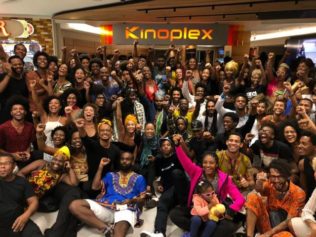
Slavery in Brazil didn’t end until 1889, making Brazil the last nation in the Western Hemisphere to outlaw the institution, and the legacy of slavery has firmly ensconced Black Brazilians in the lower rungs of Brazilian society.
“By and large, black Brazilians live in the worst housing and attend the poorest schools,” writes Roque Planas in a comprehensive two-part series for the Huffington Post that probes Brazil’s reparations movement. “They work the lowest-paid jobs, and they disproportionately fill the jail cells of the world’s fourth largest prison system. This lopsided state of affairs, Afro-Brazilian intellectuals and the country’s social scientists largely agree, is a result of racial discrimination with roots in the country’s history of slavery.”
In Brazil, the reparations movement is centered on the “quilombos,” which are communities said to be founded by runaway slaves. Brazil’s constitution — which was ratified 26 years ago after two decades of a military dictatorship — dictates that residents of quilombos have a constitutional right to land settled by their ancestors. But as more than 1 million Black Brazilians ask the country to live up to the words in the constitution, the government is showing a reluctance to follow through.
Brazil was such an important stop in the slave trade that more people of African descent currently live in Brazil than in any country in the world besides Nigeria, making up about 51 percent of Brazil’s population. What the residents of the quilombos are seeking, Planas writes, is akin to the Native American reservations in the United States, minus the self-government.
Planas refers to the devastating case made for reparations for African-Americans in the U.S. by writer Ta-Nehisi Coates in The Atlantic and says, “The idea that the U.S. government would even consider handing thousands of tracts of land to black communities is unthinkable. Few Brazilian conservatives find the idea appealing, either. Many of them have scorned the quilombo movement as an affront to property rights and have tried to overturn the law in court. And despite drafting the quilombo law in the first place, the Brazilian government has been so slow to hand over land titles to the communities in question that many applicants wonder if they’ll ever receive them.”
As Planas details, many members of Congress weren’t entirely aware of what Congresswoman Benedita da Silva, one of 11 Afro-Brazilians in Congress at the time, was doing in 1986 when she managed to convince them to include the language that gave land rights to the quilombo members. The law said they would own the land they occupied, pay no rent and no one, no matter how rich, could legally kick them out.
Planas writes that “most of the assembly members who voted for da Silva’s article likely viewed it as a symbolic gesture that would affect only a handful of communities.” But the movement has now grown from 29 quilombos in 2003 to more than 2,400 today, comprising more than 1 million people — with hundreds more communities applying that have yet to be recognized.
“There are quilombos that encompass thousands of people and quilombos that consist of just a few extended families,” Planas writes. “There are quilombos in the cities, quilombos along the countryside, quilombos on islands and quilombos in the rainforest. The land claimed by these communities totals about 4.4 million acres, according to the Brazilian federal government — an area roughly the size of New Jersey.”
When asked if she knew her proposal would be applied so extensively, da Silva said, “Of course — that’s what we were working for. [The article] wasn’t born just because I was at the Constitutional Assembly. It was born because there existed and continues to exist a black movement that includes academics, includes quilombolas, the universities — all dedicated to validating black people’s land rights.”


